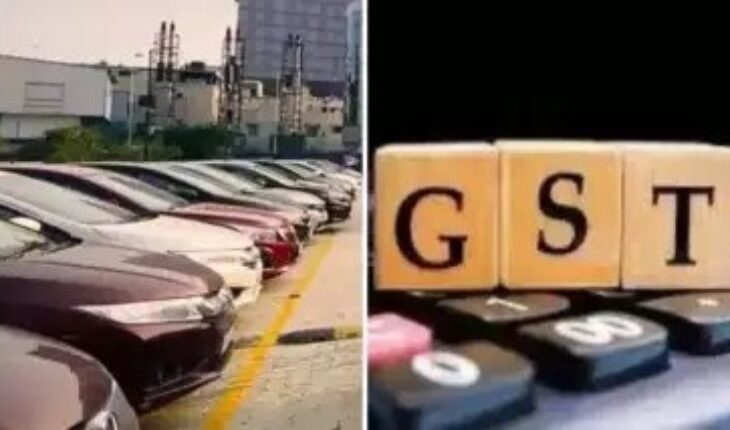The Goods and Services Tax (GST) Council has increased the GST rate on the profit margin of the sale of old and used vehicles, including electric vehicles, to 18 percent. After this announcement of the GST Council, there is confusion among the public regarding its recovery. People are confused, will they have to pay GST at the rate of 18 percent on selling their old vehicle or will this tax be levied only on the profit margin of the registered vehicle seller or dealer on selling of old & used vehicles? Here, I would like to clarify that only the registered vehicle dealer will pay GST on their profit margin. If a person sells his old or used vehicle to another person or to a vehicle dealer, then he will not have to pay GST on it.
This can be understood by an example. If a person buys a car for Rs 15 lakh and uses it for 3 years, then sells it to someone for Rs 10 lakh, then he will not have to pay GST on the sale price. Similarly, if a person sells his old and used car to a registered vehicle dealer at the same price, then also he will not have to pay GST on the sale amount. However, when the dealer sells the same car to a customer for Rs 11 lakh, then that dealer gets a profit of Rs 1 lakh, which is called margin here, but 18 percent GST i.e. Rs 18,000 will have to be paid as tax. This tax will have to be paid by the registered vehicle dealer because he has earned this profit through the business.
In this sequence, if the registered vehicle dealer claims depreciation on the vehicle sold under section 32 of the Income Tax Act, 1961, then also he will have to pay GST on the profit margin. Here margin means (Selling price – Remaining price after depreciation). If this margin is negative then the dealer will not have to pay GST, but if it is positive then he will have to pay GST on the difference between the selling price and the purchase price margin.
This can be understood with an example. The price of a vehicle is Rs 20 lakh and the seller claims a depreciation of Rs 9 lakh and fixes the selling price of the vehicle at Rs 10 lakh. In such a case, subtracting the selling price of the vehicle, which is Rs 10 lakh, from the price after depreciation, which is Rs 11 lakh, results in a negative margin, so no GST will have to be paid on it, but if the vehicle is sold for Rs 12 lakh instead of Rs 10 lakh, then a positive margin of Rs 1 lakh will come out and at the rate of 18 percent GST will be levied on car dealer & dealer will have to pay Rs 18,000 as GST.
It is pertinent to mention that Taxing margin is not a new thing. Even during the UPA regime, tax was levied on margin in the process of buying and selling old or used vehicles, which was known as ‘Service Tax’. It is worth mentioning that this tax has been levied till 2017.
Before this decision of the GST Council, old vehicles with engine capacity of 1200 CC or more, which were running on petrol, LPG or CNG and diesel vehicles with engine capacity of 1500 CC or more were being charged GST at the rate of 18 percent since 2018. Not only this, GST is also being charged at the rate of 12 percent on old electric vehicles. Therefore, there is no need to create a ruckus over the latest decision of the GST Council. Infect, through this initiative, the government has worked to bring uniformity in the collection of GST on the purchase and sale of all old vehicles, including electric vehicles, which can be called a commendable and praiseworthy initiative of the government.
The used car market in India is growing continuously. Obviously, the expansion of the market will also increase the revenue of the government. According to the Indian Blue Book (IBB) 2023 report, the used car market in India was US$ 31.33 billion in FY 2022-23, which is estimated to grow to US$ 70.48 billion by FY 2027-28. The report also states that the average growth rate of the used vehicle market was 6 percent during FY 2017 and FY 2022, but the market is expected to grow at a rate of 16 percent during the period between FY 2023 and FY 2028. In comparison, the new car market is expected to grow at a rate of just 1 percent to 6 percent during this period.
Today’s youth want to live their life in a luxurious way. Earlier people used to buy a car in middle age after working for 20 or 25 years, but now as soon as they get a job, even if it is through a loan, the youth are buying a car and a house immediately. When money is short, the youth are not even averse to buying old vehicles. In such a situation, there is immense possibility of expansion of the old vehicle market, which the government cannot ignore at all.
It can be said that the collection of GST at the rate of 18 percent on the profit margin on the sale of all types of old and used vehicles for the second or third time will increase the government’s revenue. This decision of the GST Council will not put any tax burden on the common man. It is also appropriate to say here that tax was already being collected on old or used vehicles in the name of GST or some other name.
If seen, the latest initiative of the government has brought uniformity in tax structure. In such a situation, it must be said that due to the increase in revenue, the government will be able to spend on developmental works, which will ultimately benefit the common people.
Satish Singh, Ahmedabad Based Senior Columnist, views are personal.






